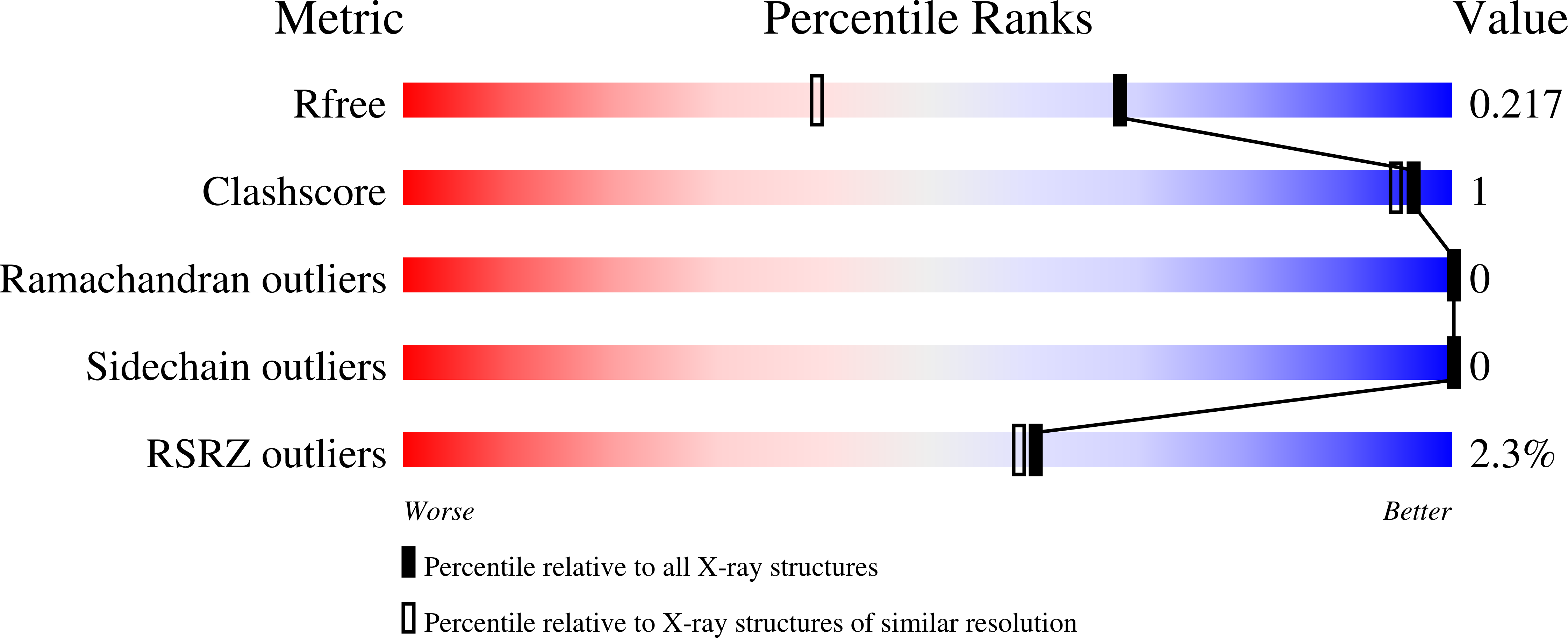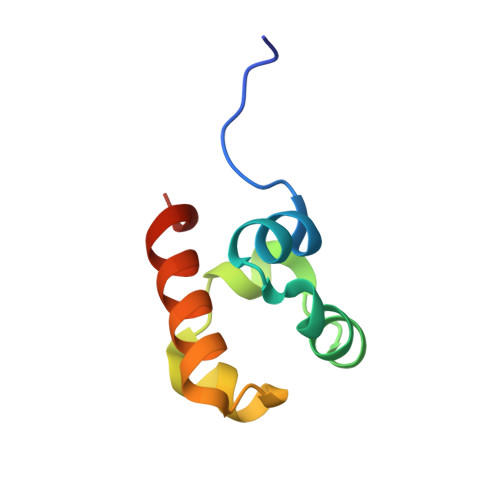Characterization of the SAM domain of the PKD-related protein ANKS6 and its interaction with ANKS3.
Leettola, C.N., Knight, M.J., Cascio, D., Hoffman, S., Bowie, J.U.(2014) BMC Struct Biol 14: 17-17
- PubMed: 24998259
- DOI: https://doi.org/10.1186/1472-6807-14-17
- Primary Citation of Related Structures:
4NJ8, 4NL9 - PubMed Abstract:
Autosomal dominant polycystic kidney disease (ADPKD) is the most common genetic disorder leading to end-stage renal failure in humans. In the PKD/Mhm(cy/+) rat model of ADPKD, the point mutation R823W in the sterile alpha motif (SAM) domain of the protein ANKS6 is responsible for disease. SAM domains are known protein-protein interaction domains, capable of binding each other to form polymers and heterodimers. Despite its physiological importance, little is known about the function of ANKS6 and how the R823W point mutation leads to PKD. Recent work has revealed that ANKS6 interacts with a related protein called ANKS3. Both ANKS6 and ANKS3 have a similar domain structure, with ankyrin repeats at the N-terminus and a SAM domain at the C-terminus. The SAM domain of ANKS3 is identified as a direct binding partner of the ANKS6 SAM domain. We find that ANKS3-SAM polymerizes and ANKS6-SAM can bind to one end of the polymer. We present crystal structures of both the ANKS3-SAM polymer and the ANKS3-SAM/ANKS6-SAM complex, revealing the molecular details of their association. We also learn how the R823W mutation disrupts ANKS6 function by dramatically destabilizing the SAM domain such that the interaction with ANKS3-SAM is lost. ANKS3 is a direct interacting partner of ANKS6. By structurally and biochemically characterizing the interaction between the ANKS3 and ANKS6 SAM domains, our work provides a basis for future investigation of how the interaction between these proteins mediates kidney function.
Organizational Affiliation:
Department of Chemistry and Biochemistry, UCLA-DOE Institute of Genomics and Proteomics, Molecular Biology Institute, University of California, Los Angeles, Boyer Hall 611 Charles E, Young Dr, E, Los Angeles, California 90095-1570, USA. bowie@mbi.ucla.edu.

















